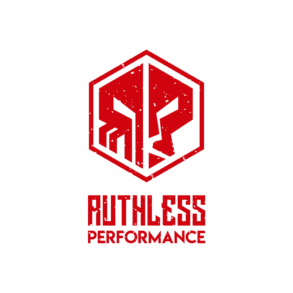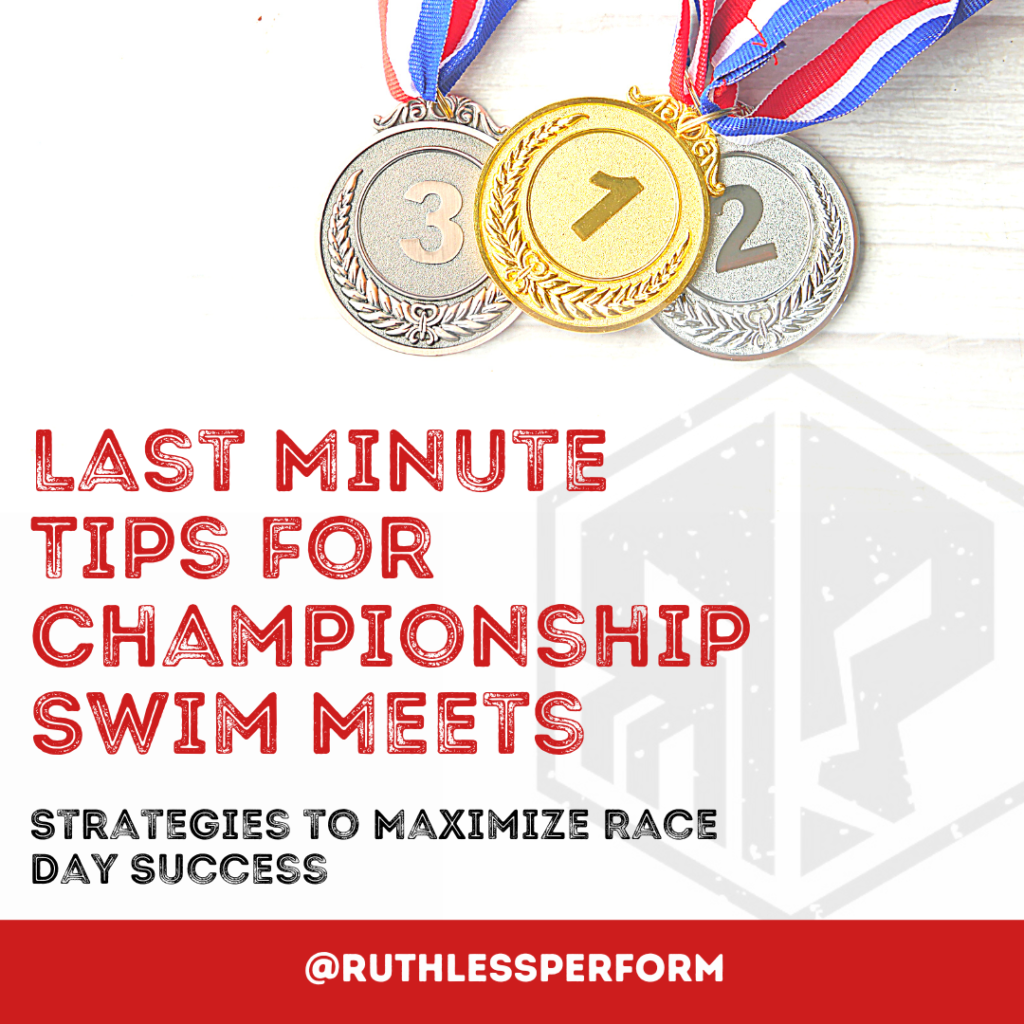In a sport like swimming, most of the preparations for the big meets are made months in advanced. In most programs, the workload has been decreased for the 2-4 weeks leading up to the event. Sure, technique is being polished up–normally right up until the day of–but most of the serious work of the season has already been accounted for.
If the work is done in the weeks, months, and in some cases, even years (in the NCAA or olympic cycle), then what value is there in last minute race preparations?
This is a double-edged sword.
Too much nervous energy in the days leading up to championships, if mishandled, can sink a swimmers success. Conversely, all of the restoration techniques in the world aren't going to take an average swimmer and make them exceptional. Only the decisions that an athlete makes day-in and day-out can do that.
Best case scenario, last-minute behaviors can increase performance on race-day by about 10%. But if mishandled, last-minute decisions can be disastrous. So we need to strike a balance between not changing the routines that got you to where you are today and changing them enough to cut out any obvious impediments to performance.
So here are a few tips to help you navigate race day and to help you come out on top.
4. Don’t Make BIG Changes

If you want to make BIG changes, you need to be thinking about this at the beginning of the season; first experiment with big changes at practice or dual meets. Big changes made last minute can create too much room for error.
The exception to this rule is if you are making changes under the direct instruction of your coach. Your coach should have a fairly comprehensive understanding of you as a unique athlete. Listen to your coaches and trust their judgement.
But there is a difference between receiving instruction from your coach and seeing a video of a top-tier swimmer’s technique and all of a sudden thinking you should emulate their technique.
Another fairly common example of this is massage. Massage is an absolutely great recovery modality, but if done too close to meet day, massage can leave you sore the day of your race.
Regularly scheduled massages can be a great tool in the toolbox for optimal athletic recovery, but for last minute massages try to keep it at least 60-72 hours before your main event.
3. Breath to Reduce Performance Anxiety
Every athlete is unique in their capacity to tolerate stress. Some athletes have their best performances at practice, others at low-stakes dual meets, and some–some thrive in the high pressure environment of a big meet. But no matter what, athletes are going to experience some level of performance anxiety.
One of the biggest surprises in my dryland coaching experiences this year has been how receptive many of my swimmers were to positional breathing drills.
In short, breathing drills work by engaging the diaphragm–the primary muscle of inhalation. The diaphragm is innervated by parasympathetic nerves, meaning that utilizing the diaphragm more effectively helps engage the ‘rest and digest’ part of the nervous system. When an athlete is too stimulated they are likely in a ‘sympathetic’ ‘fight-or-flight’ state. Being stimulated like that prior to a big swim can be super helpful–to a degree.
Utilizing breathwork like in the 90/90 Wall Belly Breathing Drill (our preferred breathing drill for swimmers) or the Deep Squat Belly Breathing Drill can engage the ‘rest and digest’ segment of the nervous system to help bring a swimmer back down to their ideal level of stimulation.
Here’s a quick step-by-step breakdown of the 90/90 Wall Belly Breathing. I would’ve added in my own demonstrations but race day is coming up too quickly to get anything edited:
90/90 Wall Belly Breathing:
- Lay on your back with your feet propped up onto a chair or against a wall
- Keep the hip and knee angle at 90 degrees (hence the name)
- Place a rolled up towel or foam roller between the knees
- Lightly press your knees into the towel or roller
- Lightly curl the legs by softly digging the heel into the chair or into the wall
- Place hands at your side
- Breath into your diaphragm by slowly raising and lowering from the belly
- Perform for 1-3 Sets of 1:00 to 3:00 depending on level of performance anxiety
- More anxious = longer duration and more sets
Here’s a quick demo video from Movement As Medicine
Deep Squat Belly Breathing with Lat Stretch
- Find a solid upright post (we sometimes use the backstroke flag pole, to perform this poolside)
- Place your feet within shoulder-width 8-16 inches back from the post
- Grasp your arms around the post at about naval to hip height
- Slowly sink down into a squat position, with the spine slightly rounded and the arms straight
- Try to breathe into the lower back
- Perform as listed above for performance anxiety (1-3 x 1-3 min)
The added benefit of the Deep Squat Belly Breathing is that it has the potential to mechanically engage more alveoli leading to a greater overall efficiency in Oxygen uptake.
Here, Dr. John Rusin demonstrates the Deep Squat Belly Breathing with Lat Stretch
In the past I thought these parasympathetic breathing drills could leave swimmers too relaxed on meet day but I’m coming around to using them more and more. Hardly anyone is too relaxed on the day of a big meet.
2. Hydrate
I’d guess that it’s just the nature of being in a body of water, but swimmers tend to have an abysmal sense of maintaining optimal hydration status.
It’s never too late to start hydrating for a meet. In fact, hydration may be the singular piece of advice from this article that can make upwards of a 10% improvement in your meet day performance.
Water by itself is a great place to start. However, your electrolyte balance may be off. This is especially true in a population like swimmers where you might not truly realize how much you are sweating while in the water.
There are various electrolyte supplements on the market. The three which we like the most are LMNT, Ultima, and Liquid IV. We have contracts with all three of these companies but only regularly sell the LMNT and Ultima in the gym (Liquid IV has a lot of sugar, but in the case of a championship meet day, extra glucose consumption may be helpful). The biggest difference between these two are the salt content. LMNT is high salt content, Ultima is low salt content. Personally I have a serving of 1 of these each day–that seems about right for a championship meet day as well. You should be utilizing electrolyte supplements not just to maximize meet day performance, but as you train as well. The effort and total volume of electrolytes lost is likely greatly higher in practice than the day of a meet.
Improving your potassium, magnesium, and sodium levels during race day is an easy way to help your physiology meet the demands that you’re trying to place on it when it counts.
For athletes that don’t train at Ruthless–LMNT, Ultima, and Liquid IV are available widely at stores like CVS, Walgreens, WholeFoods, Wegman’s, etc.. My favorites are LMNTs Citrus Salt and Orange Salt flavors, also Ultima’s Lemonade as well as their Blue Raspberry.
1. Eat Appropriately
Nutrition advice for the day-of and the days leading up to a major competitive event aren’t going to be earth shattering. For the most part, your nutrition should be dialed in WAYYYYY prior to a competitive event. Sure swimmers have a higher capacity to metabolize junk food (and frequently need calorie dense foods just to keep up caloric demands), but optimal performance comes from an optimal diet.
The day of your biggest meet of the year isn’t going to be (or shouldn’t be) the day you try Keto, or a new pre-workout supplement for the first time. But the day of a meet you should have your hydration and nutrition dialed-in.
What does dialed-in mean? This is going to vary from person to person. Different athletes have different religious customs, ancestral eating habits, different gut micro-biomes, and a whole host of different factors which contribute to what a ‘dialed-in’ diet is going to mean.
But for most, this is going to mean a relatively light day of eating on the day of the event. Too much food means too much blood is going to be diverted from the muscles to the gut in order to metabolize massive quantities of food. Simple sugars, like those found in fruits tend to be great choices.
There are more objective criteria for what a ‘good diet’ might look like, but for the day of a major competitive swim meet, eat what you know works with your body.
Final Thoughts on Meet Day Preparedness
Whatever level of competition you’ve made it to, you’ve already done the work that’s gotten you there. Try to minimize the noise and the chaos associated with meet day and recognize that the hard work has already been done.
Don’t make big changes last minute unless a qualified coach that knows your particular physiology has told you to do so.
Breath, engaging the parasympathetic nervous system to bring you down to a level of stimulation that leaves you feeling confident, prepared, and ready–not overwhelmed.
Hydrate, ensuring that you are optimizing your electrolyte balance–before, during, and after the swim meet (afterwards helps with recovery for multi-day meets).
And make sure that you are eating in accordance with your goals. The majority of food as fuel is absorbed into muscle and liver glycogen in the days leading up to the meet. Your diet on the day of meet day should be whatever you know has worked for you so far.
Enjoy the process and use meet day as a learning experience for the future. Every step you take should be aligned to the next step in your hierarchy of goals and where you want to be.
Input = Output
-John
Stay in Touch
If you want to learn more about how we train our athletes Ruthless Performance, or are interested in hearing about our swim camps or our dryland training protocols, sign up for our newsletter below or contact us directly.

